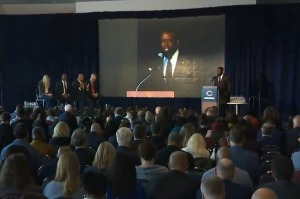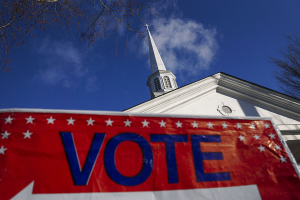Apologist Responds to Bart Ehrman's Critique of Historical Jesus
Evangelical apologist William Lane Craig recently delivered a lecture that responded to Bart Ehrman's critique of the historical Jesus by presenting New Testament evidence for the historicity of Jesus' resurrection.
Ehrman has written several books, including bestseller Misquoting Jesus, questioning the textual reliability of the New Testament. He is also the James A. Gray Distinguished Professor at the University of North Carolina at Chapel Hill.
Craig, a research professor of philosophy at Talbot School of Theology in La Mirada, Calif., pointed out there is a distinction between "scholarly Bart" and "popular Bart" or what he termed "Good Bart" and "Bad Bart."
"Scholarly Bart knows that the text of the New Testament has been established in 99 percent accuracy," said Craig during the Jan. 11 lecture at Azusa Pacific University.
"Popular Bart misrepresents this to unsuspecting laymen through innuendo and implication to make them think that the text of the New Testament is highly uncertain."
The apologist went on to argue that Ehrman's critique was misplaced since the author did not properly state and apply the "criteria of authenticity," an important objective criteria in any historical study.
"I was surprised at the sloppiness with which he states and handles the criteria of authenticity. In every case, Dr. Ehrman misformulates the criterion and he misapplies it," said Craig, who holds both a doctorate in philosophy and a doctorate in theology.
This was the case for Ehrman's interpretation of the criterion of independent attestation/multiple attestation and the criterion of dissimilarity/embarrassment.
Ehrman describes the criteria of independent attestation as: "The event that is mention in several independent documents is more likely to be historically accurate than an event mentioned in only one way." Craig, however, said the more accurate statement is: "Independent attestation increases the probability that an event is historical."
He said a singularly attested event, like an account from an eye witness, could also be highly historically credible even though it's not independently attested.
For the criterion of dissimilarity/embarrassment, Craig contended that Ehrman's rendition distorts the criteria to be applied.
Ehrman's frames the criterion of dissimilarity as, "Any tradition of Jesus that does not coincide with or works against the vested interests of the Christians who preserved it is likely to be historically reliable."
However, Craig said that criterion is better stated: "If an event or saying about Jesus is dissimilar to antecedent Judaism and to the Christianity to be subsequent then it is more likely to be historical."
Craig argued that these criteria were incorrectly applied by Ehrman to events such as the virgin birth.
"The virgin birth actually passes criterion of multiple independent attestation. In the Gospel of Matthew and Luke, we have accounts of the virgin birth which are not dependent on one another. But Erhman complains that it is not more widely attested," said Craig.
During the lecture, he also provided New Testament evidence for Jesus' resurrection and argued that Jesus' resurrection is the best explanation of these four historical facts: Jesus' burial by Joseph of Arimathea in a tomb, the discovery of Jesus' empty tomb by a group of women followers, Jesus' post-mortem appearances, and the original disciples' belief in his resurrection.
Craig used probability calculus to calculate the probability of the resurrection. The scholar claimed that Ehrman not only miscalculates this figure but also confuses the probability of the resurrection on the background knowledge and the evidence versus the probability of the resurrection on the background knowledge alone.
"Good Bart agrees with the four facts," said Craig. "In denying the resurrection, he commits demonstrable mathematical errors in thinking that the resurrection cannot be the best explanation because it's intrinsically probable. It's failing to understand probability theory."
Many of the arguments that the apologist presented during the lecture mirrored those he used in a debate against Ehrman at the Massachusetts-based College of the Holy Cross in March 2006.
Craig is an author and editor of more than 30 books, including Assessing the New Testament Evidence for the Historicity of the Resurrection of Jesus and Jesus' Resurrection: Fact or Figment?.




























